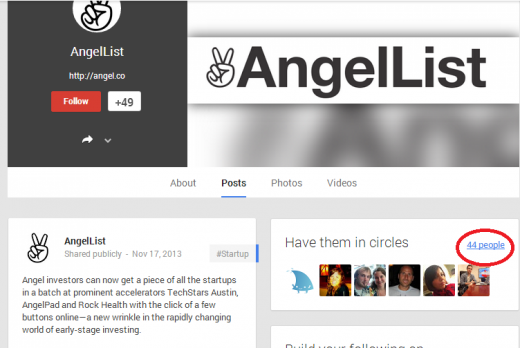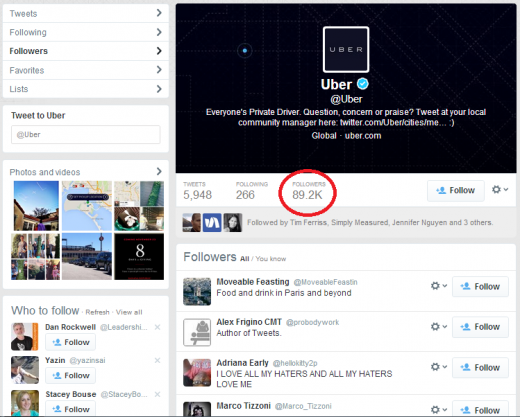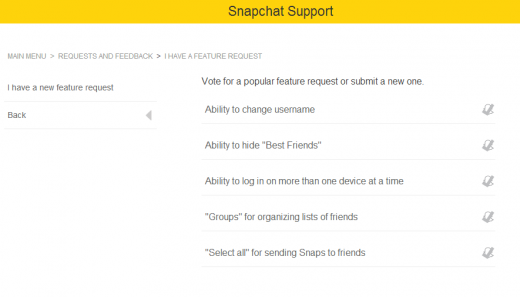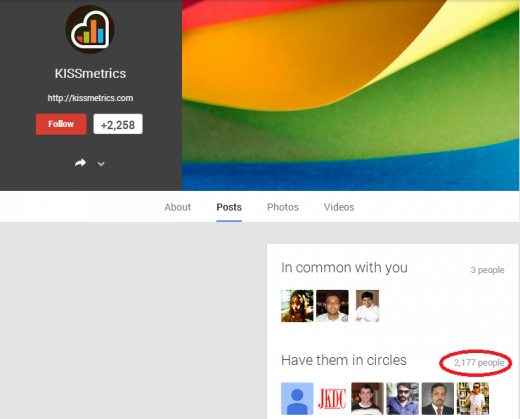
Denis Duvauchelle is CEO and co-founder of Twoodo, helping your team organize itself using simple #hashtags.
The essence of innovation and the foundation of many start-ups are to imitate and adapt from existing concepts. New ideas are mostly incremental improvements of past ideas, just as we as a biological species have evolved improvements over centuries. We at Twoodo are trying to make team collaboration tools a little bit better, for example.
One thing that never gets old in business is knowing your customer – and that’s because of how often we get it wrong. Too often we rely on our narrow worldview to inform us of who we think would use our product or service.
Data-gathering from scratch is a daunting prospect. The good news is that with a little research, you’ll find that a lot of this data has been gathered for you.
You just need to know where to look. Often times it’s not very far from your competitors.
1. Borrow their Twitter followers
Unless you’ve entered a “blue ocean market,” it’s likely that there are at least 10 other more successful companies doing what you are trying to do right now.
But that’s OK! That means there are ten companies with curated lists of people interested in your kind of service.
This is where the hijacking of open social platforms come in. Twitter is a famous example. Just click on the “followers” list of your competitor’s company and you have a list of Twitter handles worth getting to know.
If you just want to get a list of the top influencers of an account, use this tool to generate the data. If you want more comprehensive data on your competitors’ followers you can use this tool. It is important to make connections with influencers early on so they can be evangelists for your brand.
Similarly, on Google+ you can go to a page and click to see who the followers of a brand are. It’s pretty easy to link up with them, and once you are, G+ allows you to send email notifications to them of your updates or shared news.
I’m not suggesting you should contact them to spam them or tell them your service is better. But starting a conversation and finding out why they love or are frustrated by your competitors is a great way to find vital information. You’d be surprised at how many people are willing to share their experiences.
Here’s a cool article on how to growth hack Google Plus if you want to harness its full growing potential!
2. Spy on their feature requests
Want to make sure that your new app doesn’t fall into the same traps as your competitors once did? Check out their “feature request” lists and past FAQs to get an idea of what users/customers are finding challenging.
Do this by simply going to your preferred search engine and typing “COMPANY feature request.”
You can create an improved business by avoiding the mistakes made by your competitor in the past, and also try to get ahead by offering features that users are requesting (but have not been developed yet). Totally legit and totally serving the user.
3. Win over their haters
It’s as simple as typing “I hate XXX” into Topsy and seeing who hates the company and why. This is also a good way of discovering features people hate/love/want and incorporating the info into your business.
Grab their Twitter handle and offer them your far superior service! Careful not to become their next punching bag!
4. Take advantage of their inability to be everywhere
This won’t pose much of a challenge in North America, where English and Spanish covers pretty much the whole population. However, step outside of that bubble into Europe, Africa and Asia and you’ll find that an almost-copycat service done in a local language is niche enough to make you a sweet business.
Here’s an early example:
Tuenti launched in Spain as the Spanish social network when Facebook was only just allowing 13-year-old school kids on in the USA.
Spain has a population of (give or take) 50 million – more than enough people for the founders to enjoy a good income. This proves that, if nothing else, you can use language as your niche.
5. …and their inability to do everything
Mergers and acquisitions anyone? This is another area where your research on the FAQs and feature requests is useful.
Build a company or develop features fulfilling a need that the your large competitors have. Then, negotiate a partnership or buy each other out.
A famous examples is eBay buying PayPal and iBazar (a European online marketplace), therefore acquiring a payments system plus a continent worth of customers that it could convert to eBay users.
You will have to be fast on your feet if you decide to take this route, in case the company in mind is large enough to build a solution itself.
6. Borrow their demographic data
Data on visitors and customers is being generated in gigantic quantities. And it’s not limited to websites – there are startups developing ways to use street cameras to analyze who goes into shops.
Although much of this data is hidden or protected by law, there are some tidbits available online that can give you some insights into your target market. For example, if you are targeting US women then not being on Pinterest is crazy. Pinterest has an audience of 80 percent women, and 20 percent of all American women are on it.
There are other kinds of data available to assist in building your information about potential users, if you persevere on the search engines. If you are a game company, it is interesting to know that people who play Candy Crush do it from 6 to 9 PM and on Sundays.
This is important for your marketing efforts and for your live customer support. Here’s one way of finding out about the users of your competitors:
- Choose a social networking platform (we’ll use G+ here)
- Go to the page of your competitor
- Click on the “have them in circles” number on the right
- Check out the list of fans, complete with contact details, geographic location, email (often), hobbies, and tons of awesome qualitative customer info
A recent experiment I did with Facebook also brought some interesting results. I joined an interest group (Arduino boards), and clicked “add friend” on all the members that had the option available (which was plenty).
Quite a lot added me back after a quick message to check that I was a legit person. Once I had connected with a large enough sample from the group, I was able to find such data as age, gender, location, industry and so on.
This is gold when you are trying to figure out who your ideal customer is.
7. Hijack their search engine rankings
If you do a Google search for your keywords you’ll probably see a bunch of competitors on the first page results. If they’re on the first page then they must be doing something right with their backlink strategy. Imagine how powerful it would be if your site had the same backlinks as not only the first result but every single one of the top 10 results!
This is possible with a few steps and a bit of elbow grease. The good news is that you can see precisely the backlink strategy these competitors are using.
It’s possible to find all the websites, blogs, forums or online magazines your competitors are getting their links from. Once you’ve got that list it’s up to you to get busy and replicate them by commenting on the same blog posts, asking for guest posts from the same blogs, posting on the same forums and so on.
Matthew Woodward has created a complete comprehensive guide to this growth hack. You’ll soon be appearing in the top 10 results for your targeted keywords – and apparently it can even survive Google’s algorithm updates.
This is long-term SEO with a strong foundation – a useful habit to begin with early.
Is there anything I shouldn’t steal (I mean, borrow)?
Being “inspired by” or “adopting features of” other businesses is common practice. It’s costly and difficult to fight legal battles against anyone who decides to take your idea and run with it. Patent laws are not equally enforced around the world and it’s pretty hard to keep your secret sauce secret on the internet.
Even giants like Samsung and Apple are not above such controversy. Uber has allegedly poached drivers from competitors by calling up and canceling cabs (thus acquiring the driver’s number) and then offering them a job with them.
How wrong was this? I’m not sure. Marketplace ethics are a grey area.
Top image credit: Shutterstock/Peshkova
Get the TNW newsletter
Get the most important tech news in your inbox each week.









